Animals
The Painter Joachim Raphaël Boronali
NOTW and Weird Universe have covered innumerable art world hoaxes and farces. Paintings hung upside down, installations destroyed by janitors, large prize money for unmade beds, and so forth. Here is one of the first such japes. A painting done by a donkey with a brush tied to its tail, and exhibited at a famous Paris salon as the work of a new painter named Joachim Raphaël Boronali.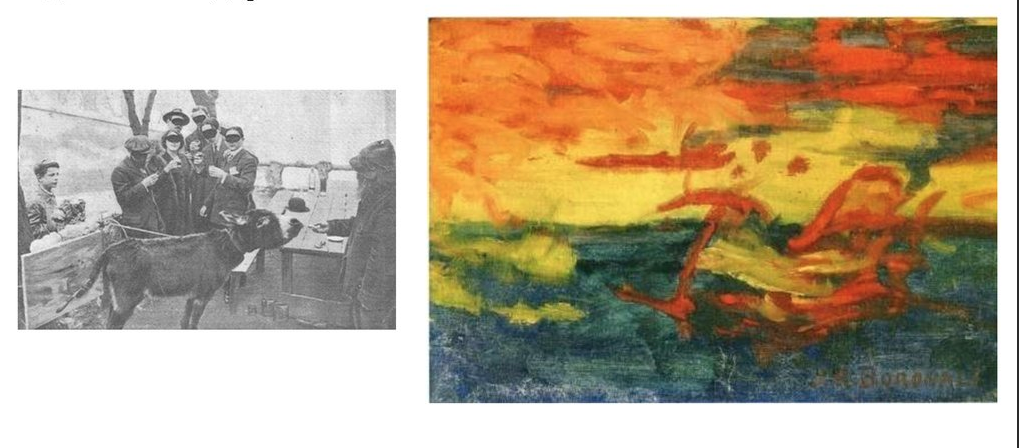
Read the whole story here.
Posted By: Paul - Thu May 14, 2020 -
Comments (3)
Category: Animals, Art, Avant Garde, Hoaxes and Imposters and Imitators, Twentieth Century
One Brave Dog
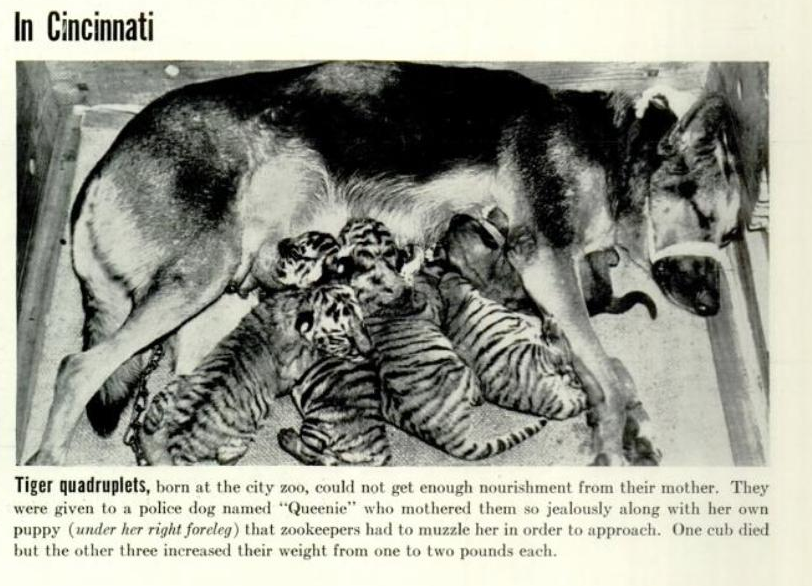
Source.
Posted By: Paul - Wed May 06, 2020 -
Comments (0)
Category: Animals, Parents, Dogs, Courage, Bravery, Heroism and Valor
Follies of the Madmen #475

Makes you smell like half a horse.
Source. (Featuring more similar ads.)
Posted By: Paul - Sun May 03, 2020 -
Comments (2)
Category: Animals, Advertising, 1960s, Fictional Monsters, Perfume and Cologne and Other Scents
Veggie Cannibalism
We all know of the "animal cannibal" motif in ads. A chicken or cow or pig dressed as a chef invites the viewer to snack on his relatives. But I have never seen veggie cannibalism till this ad.Can WU-vies find other examples?

Posted By: Paul - Wed Apr 15, 2020 -
Comments (1)
Category: Animals, Business, Advertising, Cannibalism, Vegetables
Follies of the Madmen #472
That mouse is definitely giving the finger. Is it supposed to be a sexy lure for male mice to entice them into the trap? I'm confused....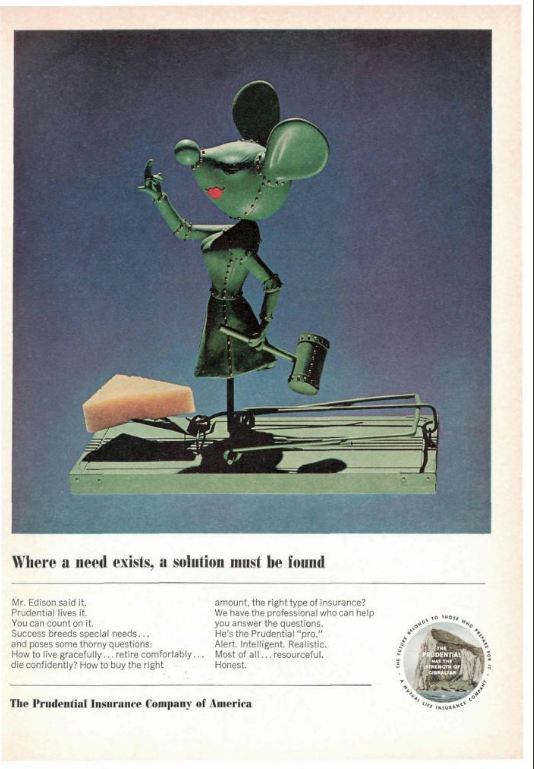
Source.
Posted By: Paul - Fri Apr 10, 2020 -
Comments (8)
Category: Animals, Anthropomorphism, Antisocial Activities, Business, Advertising, Death, 1960s
Do Beavers Rule on Mars?
In the May 1930 issue of Popular Science magazine, Thomas Elway advanced the unusual hypothesis that Mars was inhabited by a race of beavers. His idea was subsequently reported in many newspapers.As far as I can tell, Elway wasn't actually a scientist. He was a journalist. So perhaps one shouldn't attach too much weight to his opinion. Still, he gets points for creativity.
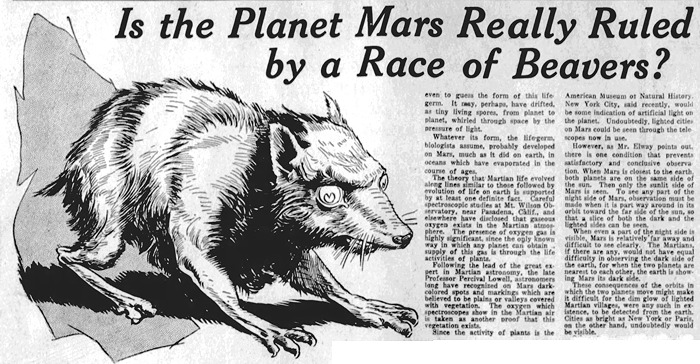
Semi-Weekly Spokesman Review - Oct 12, 1930
Elway's argument was based on the assumption (widespread at the time) that there was plant life on Mars. Therefore, animal life was also considered possible. His reasoning then proceeded as follows:
This lack of manlike life is precisely what a biologist would expect. Man and man's active mind are believed to be products of the Great Ice Age, for that time of stress and competition on earth is what is supposed to have turned mankind's anthropoid ancestors into men. The period of ice and cold over wide areas of the earth was caused, at least in part, by the elevation of continents and mountain ranges. On Mars, no mountain ranges exist, and it probably never had an Ice Age.
It is on these hypotheses that science bases its assumption that there is no human intelligence on Mars, and that animal life on the planet is still in the age of instinct. The thing to expect on Mars, then, is a fish life much like that on earth, the emergence of this fish life onto the land, and the evolution of these Martian land-fishes into retilelike creatures. Finally, animals resembling the earth's present rodents like rats, squirrels, and beavers would make their appearance.
The chief reason to expect this final change of Martian retiles into primitive mammals lies in the fact that on earth this evolution seems to have been forced by changeable weather. And Mars now possesses seasonal changes like those on earth.
Pure biological reasoning makes it probable, therefore, that the evolution of warm-blooded animals may have occurred on Mars much as it did here. There seems no reason to believe that Martian life has gone farther than that. Mars is a relatively changeless planet. Biologists suppose that the rise and fall of mountains, the increase and decrease in volcanic activity, and the ebb and flow of climate forced life on earth along its upward path. Martian life of recent ages seems to have lacked these natural incentives to better things.
Now, there is one creature on earth for the development of whose counterpart the supposed Martian conditions would be ideal. That animal is the beaver. It is either land-living or water-living. It has a fur coat to protect it from the 100 degrees below zero of the Martian night.
The Martian beavers, of course, would not be exactly like those on earth. That they would be furred and water-loving is probable. Their eyes might be larger than those of the earthly beaver because the sunlight is not so strong, and their bodies might be larger because of lesser Martian gravity. Competent digging tools certainly would be provided on their claws. The chests of these Martian beavers would be larger and their breathing far more active, as there is less oxygen in the air on Mars.
Such beaver-Martians are nothing more than pure speculation, but the idea is based upon the known facts that there is plenty of water on Mars; that vegetation almost certainly exists there; that Mars has no mountains and could scarcely have had an Ice Age; and that evidences of Martian life are not accompanied by signs of intelligence.
Herds of beaver-creatures are at least a more reasonable idea than the familiar fictional one of manlike Martians digging artificial water channels with vast machines or the still more fantastic notion of octopuslike Martians sufficiently intelligent to plan the conquest of the earth.
Posted By: Alex - Thu Apr 02, 2020 -
Comments (5)
Category: Aliens, Animals, Science, 1930s
Horse
Posted By: Paul - Thu Apr 02, 2020 -
Comments (1)
Category: Animals, Body Modifications, Cartoons
Cosmic Guinea Pig
Posted By: Paul - Sat Mar 14, 2020 -
Comments (1)
Category: Animals, Anthropomorphism, Humor, Philosophy
“Miss Wisconsin” Arrives for National October Cheese Week Festival, 1951

She's the one on your left.
Source.
Posted By: Paul - Sun Mar 01, 2020 -
Comments (1)
Category: Animals, Beauty, Ugliness and Other Aesthetic Issues, Food, 1950s
Kangaroo Tendon Sutures
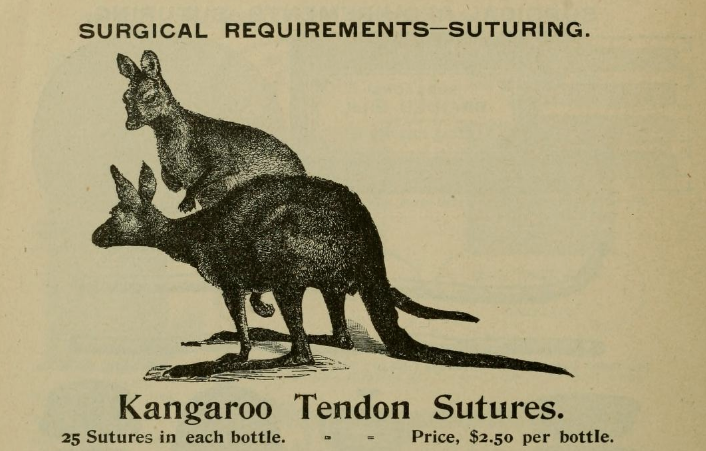
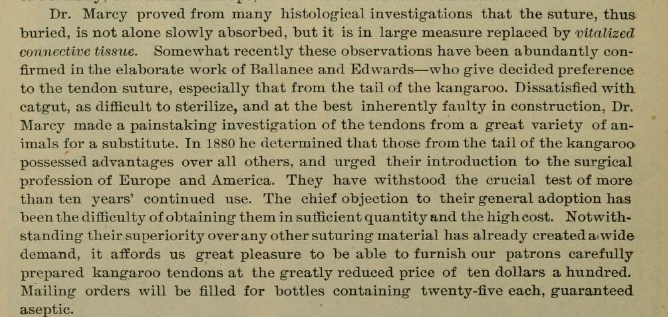

Source of first two images, with further explanation.
Posted By: Paul - Wed Feb 19, 2020 -
Comments (0)
Category: Animals, Medicine, Nineteenth Century

| Who We Are |
|---|
| Alex Boese Alex is the creator and curator of the Museum of Hoaxes. He's also the author of various weird, non-fiction, science-themed books such as Elephants on Acid and Psychedelic Apes. Paul Di Filippo Paul has been paid to put weird ideas into fictional form for over thirty years, in his career as a noted science fiction writer. He has recently begun blogging on many curious topics with three fellow writers at The Inferior 4+1. Contact Us |




